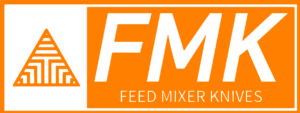## Maximizing TMR Mixer Efficiency: Choosing the Right Bale Size and Characteristics
### Bale Size Considerations
When selecting a vertical TMR mixer, the size of the bales you feed plays a crucial role. For optimal performance, consider the following:
* **Capacity vs. Hay Density:** Mixer capacity dictates bale size, not physical dimensions. Capacity is determined by hay density, which varies with length (long vs. processed).
* **Full-Bale Feeding:** Choose bale sizes that allow you to feed full bales, for efficiency and uniformity.
* **Batching and Nutritional Needs:** Smaller bales enable you to mix different qualities or meet specific nutritional requirements.
### Bale Characteristics
Besides size, consider the following bale characteristics:
* **Weight:** Bale weight impacts mixer capacity. Dry hay packs at 3 lbs./cu. ft., while processed hay packs at 6-7 lbs./cu. ft.
* **Volume:** Bales with higher density take up less volume, allowing for more to be processed in a mixer.
* **Pre-Chopped Hay:** Pre-chopped bales may fit in smaller mixers due to higher density.
### Mixer Dimensions and Number of Augers
The physical space between the auger and mixer wall limits bale size. Twin auger machines offer increased space for dropping hay into the knives.
* **4×4 Bales:** 300-400 cu. ft. mixers
* **4×4 and 4×5 Bales:** 450-600 cu. ft. mixers
* **4×6 Bales:** 650 cu. ft. or larger twin auger mixers
### Optimal Bale Size for Different Operations
* **Small Cow-Calf Operations:** Consider producing smaller bales or using pre-cut hay to minimize mixer size.
* **Large Cow-Calf Operations:** Larger mixers (650 cu. ft. or greater) are required for 5×6 bales.
**Contact FMK for a Quotation and Excellent Service**
FMK is an official distributor for Mixer Knives and spare parts. We gladly provide quotations and offer exceptional customer support. For more information, visit www.leo-ag.com.
**Disclaimer:** This article was written by AI and information within may be incorrect. Always consult a FMK professional. If any trademarks have been used, we do not manufacture, distribute, or endorse these parts.
If these trademarks have been used in this AI article they do not belong to FMK and the represented company does not manufacture, distribute or endorse these parts.
Supreme™ is a trademark of Supreme International Ltd., which does not manufacture, distribute or endorse these parts.
Penta™ is a trademark of Penta TMR, Inc., which does not manufacture, distribute or endorse these parts.
Arts-Way™ is a trademark of Art’s-Way Mfg Co. Inc., which does not manufacture, distribute or endorse these parts.
Diamond™ is a trademark of Diamond Implements, which does not manufacture, distribute or endorse these parts.
Haybuster® is a registered trademark of DuraTech Industries International, Inc., which does not manufacture, distribute or endorse these parts.
MaxiMixer™ is a trademark of Sioux Automation Center, Inc., which does not manufacture, distribute or endorse these parts.
Meyer™ is a trademark of Meyer Manufacturing Corporation, which does not manufacture, distribute or endorse these parts.
Valmetal® is a registered trademark of Valmetal Inc., which does not manufacture, distribute or endorse these parts.
Peecon® is a registered trademark of Peeters Landbouwmachines B.V., which does not manufacture, distribute or endorse these parts.
JAY-LOR® is a registered trademark of JAY-LOR International Inc., which does not manufacture, distribute or endorse these parts.
Kuhn® is a registered trademark of Kuhn S.A., which does not manufacture, distribute or endorse these parts.
Kuhn Knight® is a registered trademark of Kuhn S.A., which does not manufacture, distribute or endorse these parts.
Patz® is a registered trademark of Patz Corporation, which does not manufacture, distribute or endorse these parts.”





